Often times you want the performance of arrays over linked lists while having not conforming to the requirement of having rectangular arrays.
As an example consider an hexagonal grid, here shown with the 1-distance neighbors of cell (3, 3) in medium gray and the 2-distance neighbors in light gray.
 Say we want an array that contains, for each cell, the indices of every 1- and 2-distance neighbor for that cell. One slight issue is that cells have a different amount of X-distance neighbors -- cells on the grid border will have fewer neighbors than cells closer to the grid center.
Say we want an array that contains, for each cell, the indices of every 1- and 2-distance neighbor for that cell. One slight issue is that cells have a different amount of X-distance neighbors -- cells on the grid border will have fewer neighbors than cells closer to the grid center.
(We want an array of neighbor indices --- instead of a function from cell coordinates to neighbor indices --- for performance reasons.)
We can work around this problem by keeping track of how many neighbors each cell has. Say you have an array
neighbors2 of size R x C x N x 2, where R is the number of grid rows, C for columns, and N is the maximum number of 2-distance neighbors for any cell in the grid.
Then, by keeping an additional array n_neighbors2 of size R x C, we can keep track of which indices in neighbors2 are populated and which are just zero padding. For example, to retrieve the the 2-distance neighbors of cell (2, 5), we simply index into the array as such:
someNeigh = neighbors2[2, 5, 0..n_neighbors2[2, 5], ..]
someNeigh will be a n_neighbors2[2, 5] x 2 array (or view) of indicies, where someNeigh[0, 0] yields the row of the first neighbor, and someNeigh[0, 1] yields the column of the first neighbor and so forth.
Note that the elements at the positions
neighbors2[2, 5, n_neighbors2[2, 5]+1.., ..]
are irrelevant; this space is just padding to keep the matrix rectangular.
Provided we have a function for finding the d-distance neighbors for any cell:
import Data.Bits (shift)
rows, cols = (7, 7)
type Cell = (Int, Int)
generateNeighs :: Int -> Cell -> [Cell]
generateNeighs d cell1 = [ (row2, col2)
| row2 <- [0..rows-1]
, col2 <- [0..cols-1]
, hexDistance cell1 (row2, col2) == d]
hexDistance :: Cell -> Cell -> Int
hexDistance (r1, c1) (r2, c2) = shift (abs rd + abs (rd + cd) + abs cd) (-1)
where
rd = r1 - r2
cd = c1 - c2
How can we create the aforementioned arrays neighbors2 and n_neighbors2? Assume we know the maximum amount of 2-distance neighbors N beforehand. Then it is possible to modify generateNeighs to always return lists of the same size, as we can fill up remaining entries with (0, 0). That leaves, as I see it, two problems:
- We need a function to populate
neighbors2which operates not every individual index but on a slice, in our case it should fill one cell at a time. n_neighbors2should be populated simultaneously asneighbors2
A solution is welcome with either repa or accelerate arrays.
